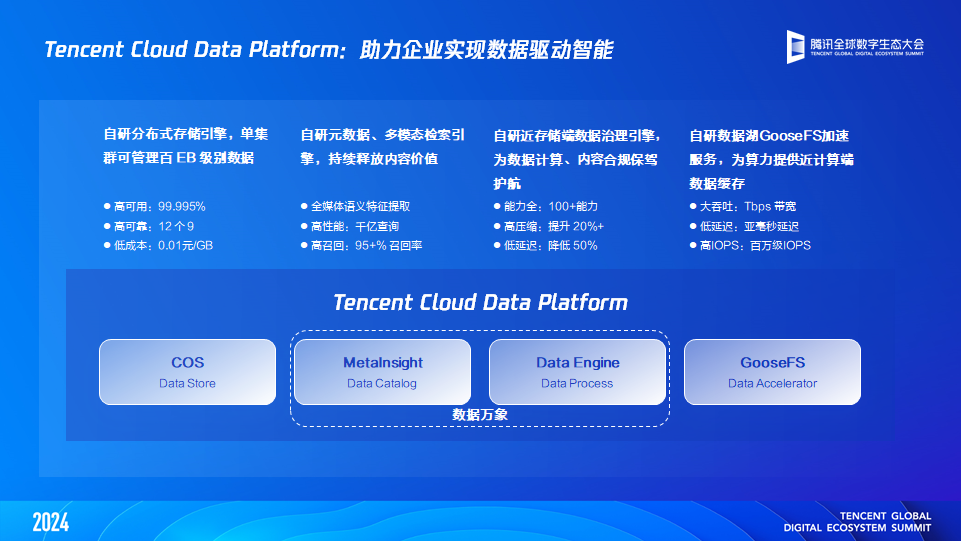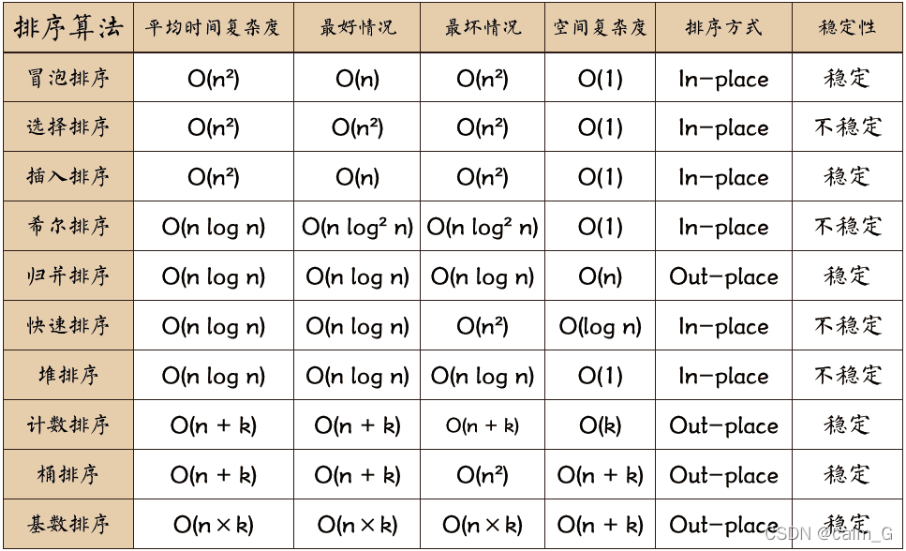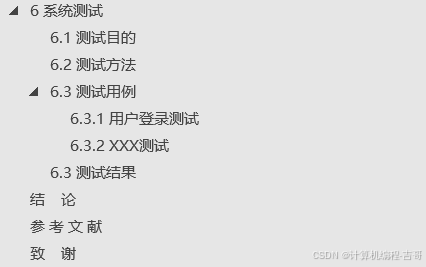文章目录
- 前言
- 一、下载源码
- 1. 下载源码
- 二、规则配置
- 1. Nacos适配
- 1.1 使用数据源
- 1.2 复制官方案例
- 1.3 动态规则配置中心
- 2. 前端路由配置
- 3. 提示
- 4. 编译和启动
- 三、测试
- 1. 修改前
- 2. 修改后
- 总结
前言
前面我们已经完成了通过nacos存储提供者流控配置文件,下面我们来接入Sentinel控制台推送规则到Nacos数据源。
一、下载源码
这里我们需要修改sentinel-dashboard源码,并重新编译打包,后续启动使用新包。
1. 下载源码
下载地址

二、规则配置
要通过 Sentinel 控制台配置集群流控规则,需要对控制台进行改造。我们提供了相应的接口进行适配。
从 Sentinel 1.4.0 开始,我们抽取出了接口用于向远程配置中心推送规则以及拉取规则:
- DynamicRuleProvider: 拉取规则
- DynamicRulePublisher: 推送规则
对于集群限流的场景,由于每个集群限流规则都需要唯一的 flowId,因此我们建议所有的规则配置都通过动态规则源进行管理,并在统一的地方生成集群限流规则。
我们提供了新版的流控规则页面,可以针对应用维度推送规则,对于集群限流规则可以自动生成 flowId。用户只需实现 DynamicRuleProvider 和 DynamicRulePublisher 接口,即可实现应用维度推送(URL: /v2/flow)。
1. Nacos适配
我们提供了 Nacos、ZooKeeper 和 Apollo 的推送和拉取规则实现示例(位于 test 目录下)。以 Nacos 为例,若希望使用 Nacos 作为动态规则配置中心,用户可以提取出相关的类,然后只需在 FlowControllerV2 中指定对应的 bean 即可开启 Nacos 适配。
1.1 使用数据源
<!-- for Nacos rule publisher sample -->
<dependency>
<groupId>com.alibaba.csp</groupId>
<artifactId>sentinel-datasource-nacos</artifactId>
<!-- <scope>test</scope>-->
</dependency>
1.2 复制官方案例

1.3 动态规则配置中心
使用Nacos推送和拉取规则
FlowControllerV2
/*
* Copyright 1999-2018 Alibaba Group Holding Ltd.
*
* Licensed under the Apache License, Version 2.0 (the "License");
* you may not use this file except in compliance with the License.
* You may obtain a copy of the License at
*
* http://www.apache.org/licenses/LICENSE-2.0
*
* Unless required by applicable law or agreed to in writing, software
* distributed under the License is distributed on an "AS IS" BASIS,
* WITHOUT WARRANTIES OR CONDITIONS OF ANY KIND, either express or implied.
* See the License for the specific language governing permissions and
* limitations under the License.
*/
package com.alibaba.csp.sentinel.dashboard.controller.v2;
import java.util.Date;
import java.util.List;
import com.alibaba.csp.sentinel.dashboard.auth.AuthAction;
import com.alibaba.csp.sentinel.dashboard.auth.AuthService;
import com.alibaba.csp.sentinel.dashboard.auth.AuthService.PrivilegeType;
import com.alibaba.csp.sentinel.util.StringUtil;
import com.alibaba.csp.sentinel.dashboard.datasource.entity.rule.FlowRuleEntity;
import com.alibaba.csp.sentinel.dashboard.repository.rule.InMemoryRuleRepositoryAdapter;
import com.alibaba.csp.sentinel.dashboard.rule.DynamicRuleProvider;
import com.alibaba.csp.sentinel.dashboard.rule.DynamicRulePublisher;
import com.alibaba.csp.sentinel.dashboard.domain.Result;
import org.slf4j.Logger;
import org.slf4j.LoggerFactory;
import org.springframework.beans.factory.annotation.Autowired;
import org.springframework.beans.factory.annotation.Qualifier;
import org.springframework.web.bind.annotation.DeleteMapping;
import org.springframework.web.bind.annotation.GetMapping;
import org.springframework.web.bind.annotation.PathVariable;
import org.springframework.web.bind.annotation.PostMapping;
import org.springframework.web.bind.annotation.PutMapping;
import org.springframework.web.bind.annotation.RequestBody;
import org.springframework.web.bind.annotation.RequestMapping;
import org.springframework.web.bind.annotation.RequestParam;
import org.springframework.web.bind.annotation.RestController;
/**
* Flow rule controller (v2).
*
* @author Eric Zhao
* @since 1.4.0
*/
@RestController
@RequestMapping(value = "/v2/flow")
public class FlowControllerV2 {
private final Logger logger = LoggerFactory.getLogger(FlowControllerV2.class);
@Autowired
private InMemoryRuleRepositoryAdapter<FlowRuleEntity> repository;
// @Autowired
// @Qualifier("flowRuleDefaultProvider")
// private DynamicRuleProvider<List<FlowRuleEntity>> ruleProvider;
// @Autowired
// @Qualifier("flowRuleDefaultPublisher")
// private DynamicRulePublisher<List<FlowRuleEntity>> rulePublisher;
@Autowired
@Qualifier("flowRuleNacosProvider")
private DynamicRuleProvider<List<FlowRuleEntity>> ruleProvider;
@Autowired
@Qualifier("flowRuleNacosPublisher")
private DynamicRulePublisher<List<FlowRuleEntity>> rulePublisher;
@GetMapping("/rules")
@AuthAction(PrivilegeType.READ_RULE)
public Result<List<FlowRuleEntity>> apiQueryMachineRules(@RequestParam String app) {
if (StringUtil.isEmpty(app)) {
return Result.ofFail(-1, "app can't be null or empty");
}
try {
List<FlowRuleEntity> rules = ruleProvider.getRules(app);
if (rules != null && !rules.isEmpty()) {
for (FlowRuleEntity entity : rules) {
entity.setApp(app);
if (entity.getClusterConfig() != null && entity.getClusterConfig().getFlowId() != null) {
entity.setId(entity.getClusterConfig().getFlowId());
}
}
}
rules = repository.saveAll(rules);
return Result.ofSuccess(rules);
} catch (Throwable throwable) {
logger.error("Error when querying flow rules", throwable);
return Result.ofThrowable(-1, throwable);
}
}
private <R> Result<R> checkEntityInternal(FlowRuleEntity entity) {
if (entity == null) {
return Result.ofFail(-1, "invalid body");
}
if (StringUtil.isBlank(entity.getApp())) {
return Result.ofFail(-1, "app can't be null or empty");
}
if (StringUtil.isBlank(entity.getLimitApp())) {
return Result.ofFail(-1, "limitApp can't be null or empty");
}
if (StringUtil.isBlank(entity.getResource())) {
return Result.ofFail(-1, "resource can't be null or empty");
}
if (entity.getGrade() == null) {
return Result.ofFail(-1, "grade can't be null");
}
if (entity.getGrade() != 0 && entity.getGrade() != 1) {
return Result.ofFail(-1, "grade must be 0 or 1, but " + entity.getGrade() + " got");
}
if (entity.getCount() == null || entity.getCount() < 0) {
return Result.ofFail(-1, "count should be at lease zero");
}
if (entity.getStrategy() == null) {
return Result.ofFail(-1, "strategy can't be null");
}
if (entity.getStrategy() != 0 && StringUtil.isBlank(entity.getRefResource())) {
return Result.ofFail(-1, "refResource can't be null or empty when strategy!=0");
}
if (entity.getControlBehavior() == null) {
return Result.ofFail(-1, "controlBehavior can't be null");
}
int controlBehavior = entity.getControlBehavior();
if (controlBehavior == 1 && entity.getWarmUpPeriodSec() == null) {
return Result.ofFail(-1, "warmUpPeriodSec can't be null when controlBehavior==1");
}
if (controlBehavior == 2 && entity.getMaxQueueingTimeMs() == null) {
return Result.ofFail(-1, "maxQueueingTimeMs can't be null when controlBehavior==2");
}
if (entity.isClusterMode() && entity.getClusterConfig() == null) {
return Result.ofFail(-1, "cluster config should be valid");
}
return null;
}
@PostMapping("/rule")
@AuthAction(value = AuthService.PrivilegeType.WRITE_RULE)
public Result<FlowRuleEntity> apiAddFlowRule(@RequestBody FlowRuleEntity entity) {
Result<FlowRuleEntity> checkResult = checkEntityInternal(entity);
if (checkResult != null) {
return checkResult;
}
entity.setId(null);
Date date = new Date();
entity.setGmtCreate(date);
entity.setGmtModified(date);
entity.setLimitApp(entity.getLimitApp().trim());
entity.setResource(entity.getResource().trim());
try {
entity = repository.save(entity);
publishRules(entity.getApp());
} catch (Throwable throwable) {
logger.error("Failed to add flow rule", throwable);
return Result.ofThrowable(-1, throwable);
}
return Result.ofSuccess(entity);
}
@PutMapping("/rule/{id}")
@AuthAction(AuthService.PrivilegeType.WRITE_RULE)
public Result<FlowRuleEntity> apiUpdateFlowRule(@PathVariable("id") Long id,
@RequestBody FlowRuleEntity entity) {
if (id == null || id <= 0) {
return Result.ofFail(-1, "Invalid id");
}
FlowRuleEntity oldEntity = repository.findById(id);
if (oldEntity == null) {
return Result.ofFail(-1, "id " + id + " does not exist");
}
if (entity == null) {
return Result.ofFail(-1, "invalid body");
}
entity.setApp(oldEntity.getApp());
entity.setIp(oldEntity.getIp());
entity.setPort(oldEntity.getPort());
Result<FlowRuleEntity> checkResult = checkEntityInternal(entity);
if (checkResult != null) {
return checkResult;
}
entity.setId(id);
Date date = new Date();
entity.setGmtCreate(oldEntity.getGmtCreate());
entity.setGmtModified(date);
try {
entity = repository.save(entity);
if (entity == null) {
return Result.ofFail(-1, "save entity fail");
}
publishRules(oldEntity.getApp());
} catch (Throwable throwable) {
logger.error("Failed to update flow rule", throwable);
return Result.ofThrowable(-1, throwable);
}
return Result.ofSuccess(entity);
}
@DeleteMapping("/rule/{id}")
@AuthAction(PrivilegeType.DELETE_RULE)
public Result<Long> apiDeleteRule(@PathVariable("id") Long id) {
if (id == null || id <= 0) {
return Result.ofFail(-1, "Invalid id");
}
FlowRuleEntity oldEntity = repository.findById(id);
if (oldEntity == null) {
return Result.ofSuccess(null);
}
try {
repository.delete(id);
publishRules(oldEntity.getApp());
} catch (Exception e) {
return Result.ofFail(-1, e.getMessage());
}
return Result.ofSuccess(id);
}
private void publishRules(/*@NonNull*/ String app) throws Exception {
List<FlowRuleEntity> rules = repository.findAllByApp(app);
rulePublisher.publish(app, rules);
}
}
NacosConfig
/*
* Copyright 1999-2018 Alibaba Group Holding Ltd.
*
* Licensed under the Apache License, Version 2.0 (the "License");
* you may not use this file except in compliance with the License.
* You may obtain a copy of the License at
*
* http://www.apache.org/licenses/LICENSE-2.0
*
* Unless required by applicable law or agreed to in writing, software
* distributed under the License is distributed on an "AS IS" BASIS,
* WITHOUT WARRANTIES OR CONDITIONS OF ANY KIND, either express or implied.
* See the License for the specific language governing permissions and
* limitations under the License.
*/
package com.alibaba.csp.sentinel.dashboard.rule.nacos;
import com.alibaba.csp.sentinel.dashboard.datasource.entity.rule.FlowRuleEntity;
import com.alibaba.csp.sentinel.datasource.Converter;
import com.alibaba.fastjson.JSON;
import com.alibaba.nacos.api.config.ConfigFactory;
import com.alibaba.nacos.api.config.ConfigService;
import org.springframework.context.annotation.Bean;
import org.springframework.context.annotation.Configuration;
import java.util.List;
import java.util.Properties;
/**
*定义nacos连接信息
*/
@Configuration
public class NacosConfig {
@Bean
public Converter<List<FlowRuleEntity>, String> flowRuleEntityEncoder() {
return JSON::toJSONString;
}
@Bean
public Converter<String, List<FlowRuleEntity>> flowRuleEntityDecoder() {
return s -> JSON.parseArray(s, FlowRuleEntity.class);
}
@Bean
public ConfigService nacosConfigService() throws Exception {
Properties properties = new Properties();
properties.setProperty("serverAddr","localhost");
properties.setProperty("namespace","dev");
properties.setProperty("username","admin");
properties.setProperty("password","admin");
return ConfigFactory.createConfigService(properties);
}
}
NacosConfigUtil
/*
* Copyright 1999-2018 Alibaba Group Holding Ltd.
*
* Licensed under the Apache License, Version 2.0 (the "License");
* you may not use this file except in compliance with the License.
* You may obtain a copy of the License at
*
* http://www.apache.org/licenses/LICENSE-2.0
*
* Unless required by applicable law or agreed to in writing, software
* distributed under the License is distributed on an "AS IS" BASIS,
* WITHOUT WARRANTIES OR CONDITIONS OF ANY KIND, either express or implied.
* See the License for the specific language governing permissions and
* limitations under the License.
*/
package com.alibaba.csp.sentinel.dashboard.rule.nacos;
/**
*主要是定义GROUP_ID和FLOW_DATA_ID_POSTFIX
*/
public final class NacosConfigUtil {
public static final String GROUP_ID = "SENTINEL_GROUP";
public static final String FLOW_DATA_ID_POSTFIX = "-flow-rules.json";
public static final String PARAM_FLOW_DATA_ID_POSTFIX = "-param-rules";
public static final String CLUSTER_MAP_DATA_ID_POSTFIX = "-cluster-map";
/**
* cc for `cluster-client`
*/
public static final String CLIENT_CONFIG_DATA_ID_POSTFIX = "-cc-config";
/**
* cs for `cluster-server`
*/
public static final String SERVER_TRANSPORT_CONFIG_DATA_ID_POSTFIX = "-cs-transport-config";
public static final String SERVER_FLOW_CONFIG_DATA_ID_POSTFIX = "-cs-flow-config";
public static final String SERVER_NAMESPACE_SET_DATA_ID_POSTFIX = "-cs-namespace-set";
private NacosConfigUtil() {}
}
2. 前端路由配置
前端页面需要手动切换,或者修改前端路由配置(sidebar.html 流控规则路由从 dashboard.flowV1 改成 dashboard.flow 即可,注意簇点链路页面对话框需要自行改造)。

3. 提示
默认 Nacos 适配的 dataId 和 groupId 约定如下:
- groupId: SENTINEL_GROUP
- 流控规则 dataId: {appName}-flow-rules,比如应用名为 appA,则 dataId 为 appA-flow-rules
用户可以在 NacosConfigUtil 修改对应的 groupId 和 dataId postfix。用户可以在 NacosConfig 配置对应的 Converter,默认已提供 FlowRuleEntity 的 decoder 和 encoder。
注意:接入端也需要注册对应的动态规则源,参考 集群流控规则配置文档。
4. 编译和启动
mvn clean package
三、测试
1. 修改前
第一次懒加载请求会全部通过


2. 修改后


控制台推送过来的没有样式,先将就吧
请求阈值升为6,请求全部通过,修改生效,符合预期
总结
回到顶部
使用Sentinel控制台+应用程序+Nacos,优点很明显,可视化配置+动态修改+持久化存储;
使用控制台之后也有个缺点,簇点链路和流控规则不互通了,官方给的说法是注意簇点链路页面对话框需要自行改造,最简单的办法就是原来的路由也放开,一块用呗!没试,大家自己试吧~
其实应用程序+Nacos完全够用,Sentinel控制台完全可以作为临时控制和调整使用,具体使用还是以配置文件为主,控制台为辅。
我调整后的这一版已上传附件,欢迎大家下载使用!




















